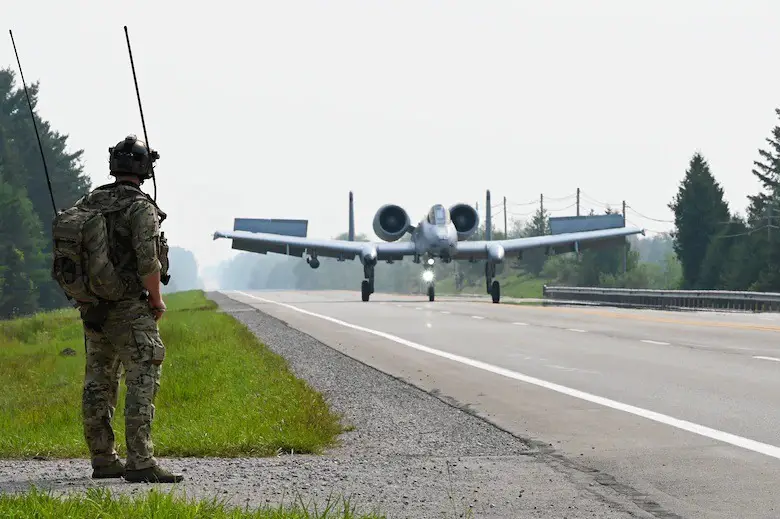Members of the Michigan National Guard’s 127th Wing, Selfridge Air National Guard Base, made history today when they successfully landed modern military aircraft, then turned around and took off again from an American highway for the first time. Two A-10 Thunderbolt II pilots of the 127th Wing, two A-10 pilots of the 355th Wing, Davis-Monthan Air Force Base, Arizona, and six C-146 Wolfhounds aircrew members from the Air Force Special Operations Command, Hurlburt Field, Florida, executed the mission, landing the aircraft on a closed portion of Michigan State Highway M-32 here, as part of a training event named, “Thunder LZ.”

“Thunder LZ gave the pilots the opportunity to land in an austere environment that they’re not used to. But it’s also a first in the nation, as this is the first time that modern combat aircraft have landed on U.S. soil, on a highway. Our adversaries have advanced weapons systems and advanced technology that they can use against us, so we need to be able to operate efficiently in austere situations and gain proficiency in those operations,” said Lt. Col. Brian Wyrzykowski, the mission commander for Thunder LZ and a KC-135 Stratotanker instructor-pilot at the 127th Wing.

Planned in line with the Air Force’s agile combat employment concept, Thunder LZ was established on a four-lane stretch of M-32 approximately three miles west of the Alpena Combat Readiness Training Center, giving participating units the chance to practice posturing forces in a combat scenario. Thunder LZ allowed training participants to practice the forward-arming and refueling concept of ACE, taking a small aircraft crew, returning the aircraft to these austere locations, then generating the aircraft back into the fight.

Held as part of the Michigan National Guard’s annual, multinational, largescale military training event, Exercise Northern Strike, the landing took place within the national all-domain warfighting center, an area of airspace, ranges and bases geographically located in northern Michigan, where all-domain training occurs in a joint environment. From the local utility companies to municipal emergency management agencies, Michigan Department of Transportation, and even residents, the local community played a key role in the training event. After all the planning and coordination, all six aircraft successfully landing and departing from M-32 was the most basic metric of mission success.
















